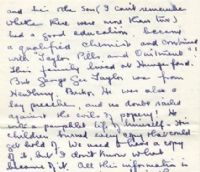Précis by Mike (Westberkshire Museum volunteer)
Charles Gee Taylor died in 1890 at the age of 84 and was buried at Newtown Road
cemetery. He was well-respected and was well-known for being a proprietor of
patent medicines and a teetotaller. He was a member of the Wesleyan Methodist
Society.
Autobiography of Charles Gee Taylor Note the friends of Newtown Road Cemetery have a full copy of C G Taylors autobiography comprising some 93 pages
He was born in April 1806 at Longcroft (TB: must be Longcott) near Farringdon but
was soon taken to live with his grandmother in Little Hinton, near Swindon.
At the age of four he was sent to a school about half a mile away run by an old
couple called Candle but was not taught to read there – he spent most of his time
playing outside.
At the age of 6 he was sent to live with a woman and her drunken, violent husband in
Market Ilsley. The husband treated his wife and Charles very badly but he eventually
ran away, joined the army and died after falling from his horse. While with this couple
he never opened a book or went to church.
In the autumn of 1813, he went to live with some relatives in Kintbury where, again,
he was badly treated. After a few months he was sent to a Dame’s school but was
often kept at home to work. He heard that there was a school on Sunday mornings at
the local Methodist Chapel and was allowed to go there. His teacher there was
Thomas Toe who helped him with reading and he learned a lot about the life of
Jesus which he found very moving. His work involved running errands, loading hay,
ploughing, harrowing and looking after the horses. In 1815 he was sent to work in a
Silk Mill with other children. He worked six days a week and was regularly strapped
on the back by the overseer who was an old soldier. Many of the children stole silk
and destroyed it in revenge for their bad treatment. He worked long days, often at
nights and in all sorts of weather and was treated so badly that he often thought of
suicide. Although he wanted to attend the Methodist chapel, he wasn’t allowed to. He
was keen to learn to write and eventually went to a night school to learn how to do
so.
He wanted to attend the Methodist Chapel but was told that Methodists were liars
and hypocrites. Instead, he was allowed to attend Church on Sundays but didn’t find
the sermons very inspiring. He felt he was a sinner and also became very upset at
the hypocrisy of the people he knew. However, he then met Richard Bronsdon, a
baker and grocer, who lived in Kintbury and was very pious. He unburdened himself
to Richard who responded kindly and told him that he wasn’t a sinner.
His relatives were very keen that he be exposed to smallpox so that he could
become immune and so travel safely to different parts of the country and move
furniture for people in a horse and cart. In 1820 the disease came to a neighbouring
family so he was sent to their house. After a few days one of his relatives stuck a
darning needle into his arm in several places and then smeared his arm with fluid
from the sores of the smallpox sufferers and bound the cuts tightly. He became ill
and was taken to a farm a few miles away and remained there unconscious for about
2
a month. During this time large pieces of flesh fell from his body and he smelled
terribly. Dr Magor (TB: must be Major) from Hungerford said that he was so ill that
he would certainly die. However, he recovered although his arms and legs were
badly marked and ever since he suffered from coughs and a bad chest. He was
immediately made to go back to work and although he worked very hard, night and
day, he was given less than one shilling per year.
In November 1827 he decided to run away and went to see his uncle Abraham who
lived in Little Hinton and had often suggested to Charles that eh come and work for
him. However, he then decided that he wasn’t going to work for any of his relatives
and went on to Newbury and then to London with only 63/4d in his pocket. He
arrived in Turnham Green and found work with Thomas Appleby from Watlington
who transported goods from Oxford to London once a week. He lived in Watlington
and on Sundays attended church where he was delighted with the sermons of Mr
Mills, the minister. He also attended the Wesleyan Chapel on Sunday nights. He
became very confused as to which religion he should follow. He then fell out with
Thomas and left his employment in London.
His old employer in Kintbury asked him to return and offered proper wages. He took
up the offer but it was all lies and then he was badly injured in a big fight one night in
the Blue Ball. He visited Dr Alderman in Kintbury who helped him recover from his
wounds. Dr Alderman also talked to him about medicines and how they worked and
he became very interested in this.
In May 1829 he bought a donkey and cart for £5 – payment was to be from the
money he made while transporting goods from Kintbury to Newbury. Eventually,
business improved and he sold the donkey and bought a horse and a larger cart.
Around 1831 he rented some land for £4 an acre from Mr Johnson of Wallington
House, Kintbury and started to grow wheat and other crops, while still running the
carrier business. He felt very happy that he was working for himself at last and didn’t
mind the long hours. When the new poor law came into effect in 1834, many people
became worse off and his expenses were twice his income. Fortunately, Mr
Johnson, who was impressed with him, let him have more land and allowed him to
pay the rent when he had the money. He also offered to lend Charles money.
However, Charles decided to sell everything and pay off his debts and went to live in
Newbury in March 1837.
He then relates many stories about the evil effects of drink on people.
His first job in Newbury was as a porter for a grocer, Mr C. Wright, who was so
impressed with him that he offered to provide some finance if ever Charles decided
to start a business. He went looking for work in London in the summer of that year
but was unsuccessful and so returned to Newbury. He started working for a brewery
run by a wine merchant, Mr Gale, who also gave Charles’ wife the opportunity to run
a public house. He did not enjoy working with the other men in the brewery and his
kindness was often taken advantage of. He then had the misfortune to severely
damage the fingers of his left hand while cutting a hedge. He had little strength in
his left arm which had to be kept in a sling for 4 months. He was very worried about
how to earn money to feed his wife and children and decided to try to sell the drops
and ointment he had made for treating rheumatic gout. He bought a license to sell
medicines and learnt how to bottle the medicaments and then used agents in
Marlborough, Swindon and Wantage to sell them. Very soon he had agents selling in
3
10 counties. However, he knew very little about the drugs trade and had to learn
about buying the raw materials as well as bottling, labelling, printing and distribution.
In November 1840, after listening to a talk about Teetotalism, he decided never to
drink any alcohol again. He resolved to live by four principles: work hard, live plainly,
pray earnestly and drink water. When he returned home he told his wife that he
didn’t want her to run a public house any longer. Everyone tried to persuade him to
not give up the pub but after a few weeks he simply removed all his furniture and left.
While travelling around the country visiting his agents he also began to preach and
give talks about the evils of alcohol.
In April 1857 he gave a talk in a village near Warminster. He told the people that
huge quantities of wheat and barley were used to make liquor each year instead of
bread and this made the price of bread so high. He also told them that £9 million was
spent each year on tobacco and snuff which were both very bad for the health. He
said that 18 out of 20 deaths of people younger than 20 were due to smoking.
People threw stones and dirt at him but he was rescued by a policeman who took
him to his lodgings although the crowd stood outside shouting abuse at him.
He then lists a large number of remedies for common ailments.
He ends by saying that education cannot prevent drunkenness as long as parsons
continue to drink. He also rants on about Popery.
A few of the major problems with the “autobiography”
1. It does not tell us when he married, his wife’s name, how many children he had
2. It does not tell us whether or not his drug business was a success or how this
developed
3. It does not tell us what he became. A successful businessman? A preacher?
ANSWERS BY BRIAN SYLVESTER (April 2017)
Dear Ruth
Our congratulations and grateful thanks to your anonymous, dedicated volunteer
who has taken the trouble to précis C.G. Taylor’s life (it’s so Dickensian, isn’t it!).
By a Cc of this email, I shall send a copy to the great, great, great whatever of CGT,
Tom Bekers, who is a Belgian and who focussed our attention onto this character.
Your biographer poses certain questions at the end suggesting you would like to
know more about him? I’ll endeavour to answer some of them for you, and finally
come up with a suggestion.
So first of all let me quote from his obituary in the Newbury Weekly News (April
1890) which put us onto the search for his literature:-
Old Gee Taylor is dead, and with him has departed one of the oldest inhabitants, and
certainly one of the characters of the town.
4
The old man was well known for miles around, having during his life taken an active
part in sick visiting and temperance agitation, quaint in his manner, out spoken in his
opinions, he offended many, but there was a kind heart beating behind all, and many
poor sick homes have missed his visits during the time he has not been so active as
formerly. "He was a rum old chap, but well meant in his intentions," is the short mode
in which C. Gee Taylor's biography has been put in a single sentence. But are not
the chronicles of C. Gee Taylor already written in a book which he himself
published? - a characteristic of the man.
Besides the three pamphlets you have as appendices to a book on Newbury, he also
published a single 40 page volume - 'The Life and Adventures of Charles Gee
Taylor' - which, although repeating much of what you have, also adds to it. For
example ...
HIS WIFE AND FAMILY:-
The full text of this booklet may be found on dropbox by clicking here:
https://www.dropbox.com/scl/fo/8npxskadr2qbch5s6mpky/h?rlkey=gyrjgipie3qabkp221yc1gptc&dl=0
Alternatively copy and paste into a your browser to find the web page or contact us
Incidentally, these publications survived despite the family doing “all they could to
burn every copy they could get hold of". It seems that despite his strong anti-popery views, it
transpires his son married a Catholic!
West Berkshire Museum has complete copies
C G Taylors descendents are happy that the full text of "The autobiography of Charles Gee Taylor" (1st edition, part one, two, three and four) and "The Eventful life and travels/ Life and Adventures of Charles Gee Taylor, second edition" can be shared online via website or dropbox for the broad public and scientific study, be it only for non-commercial use.
For any commercial use, adaptation, paper reproduction and/or editorial versions, and for more information about Charles Gee Taylor, please contact the descendants of Charles Gee Taylor via Friends of Newtown Road Cemetery who have email links |


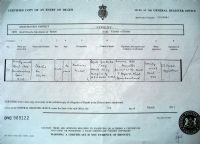
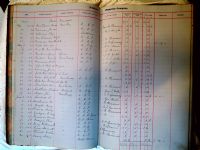
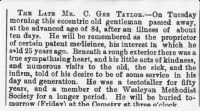
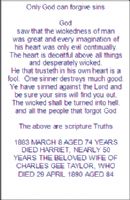

.jpg)
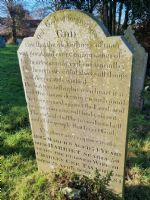
.jpg)
